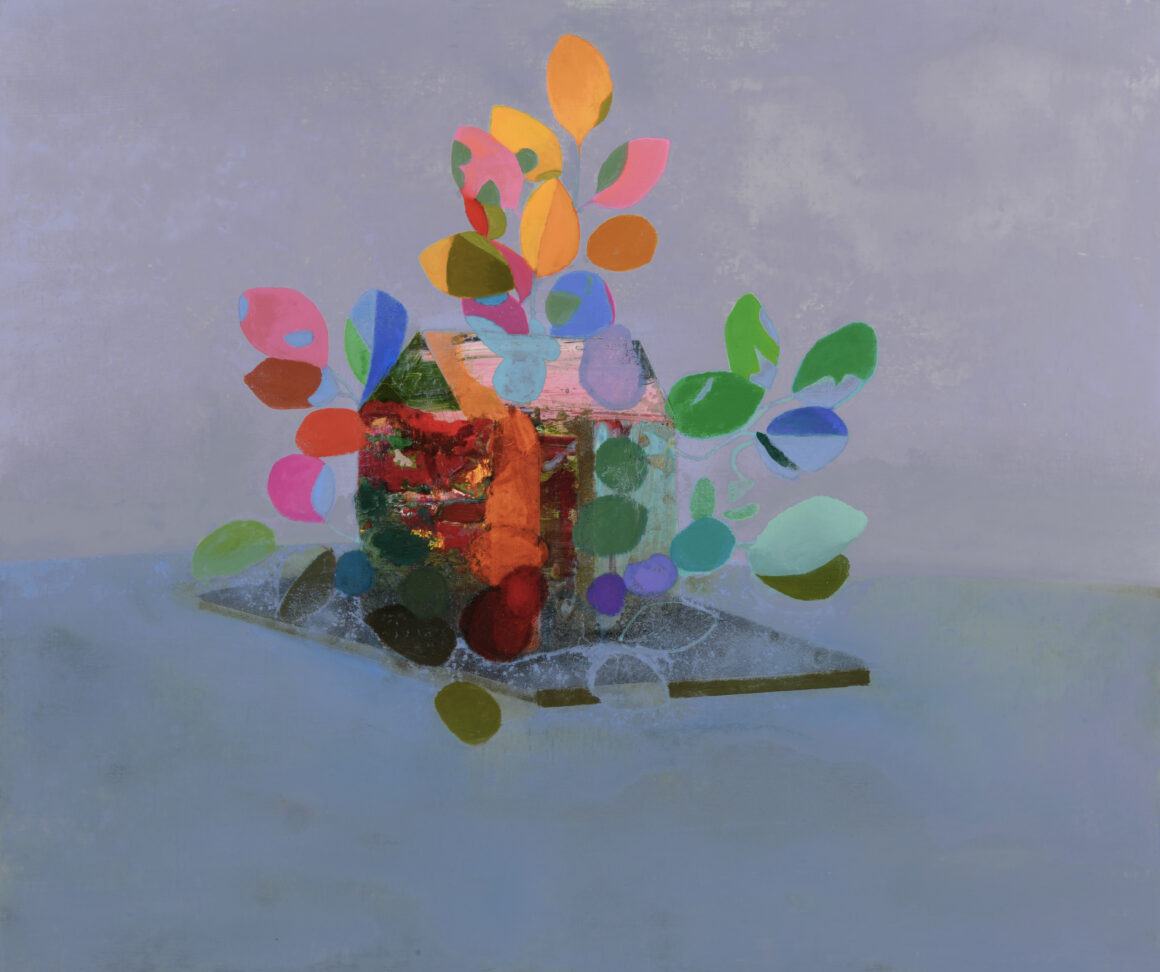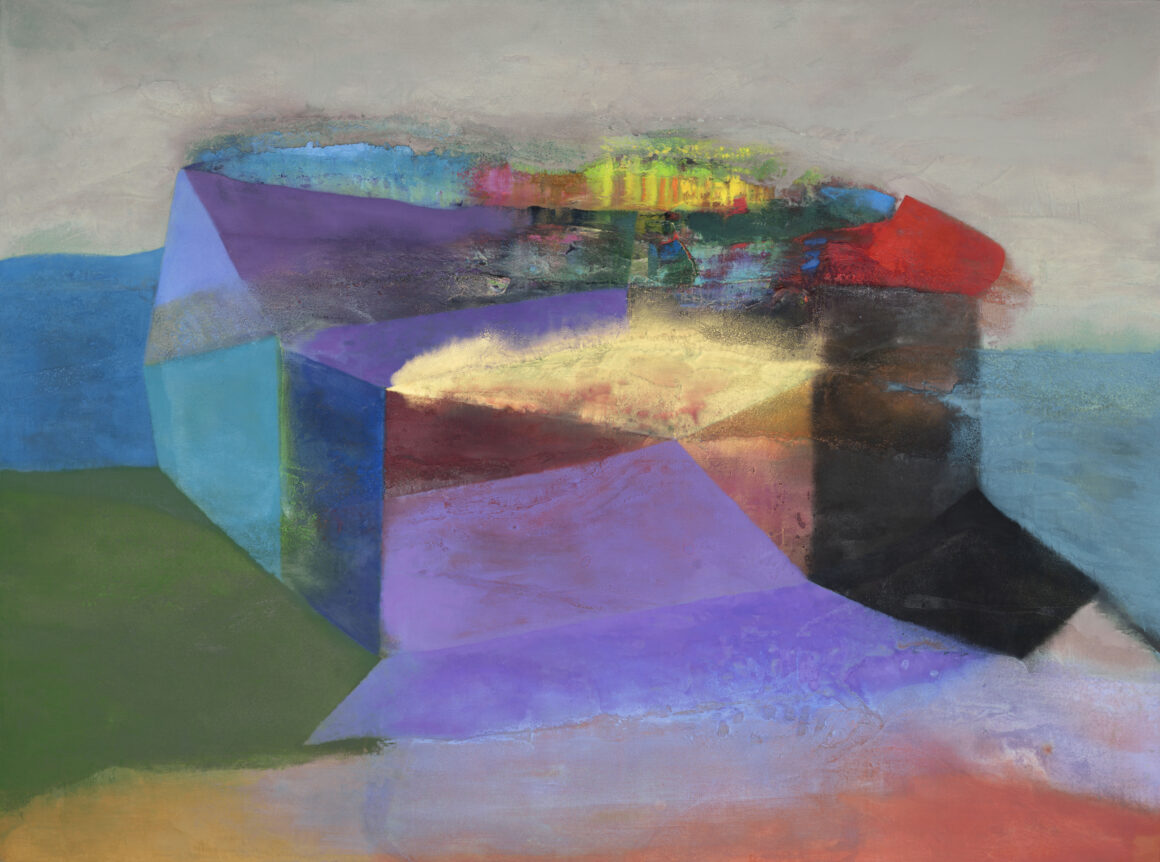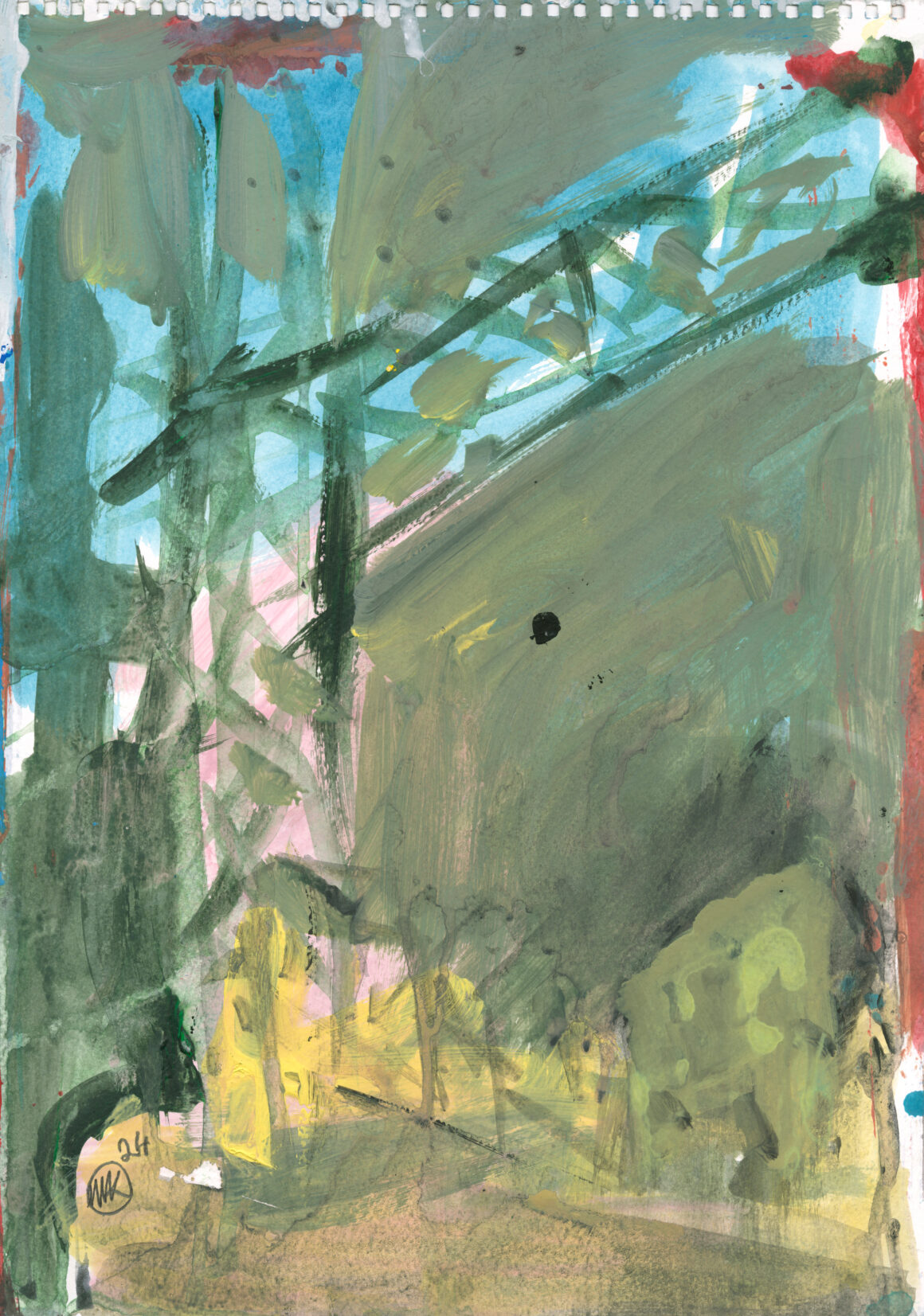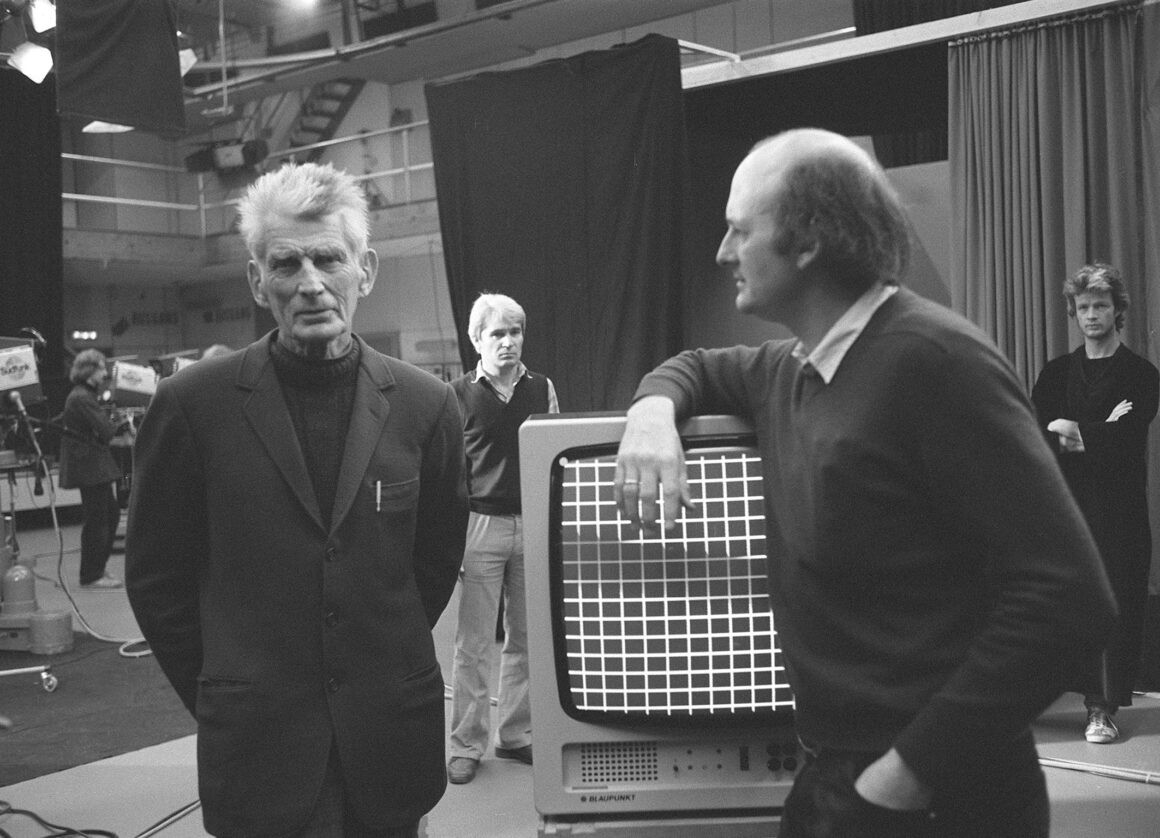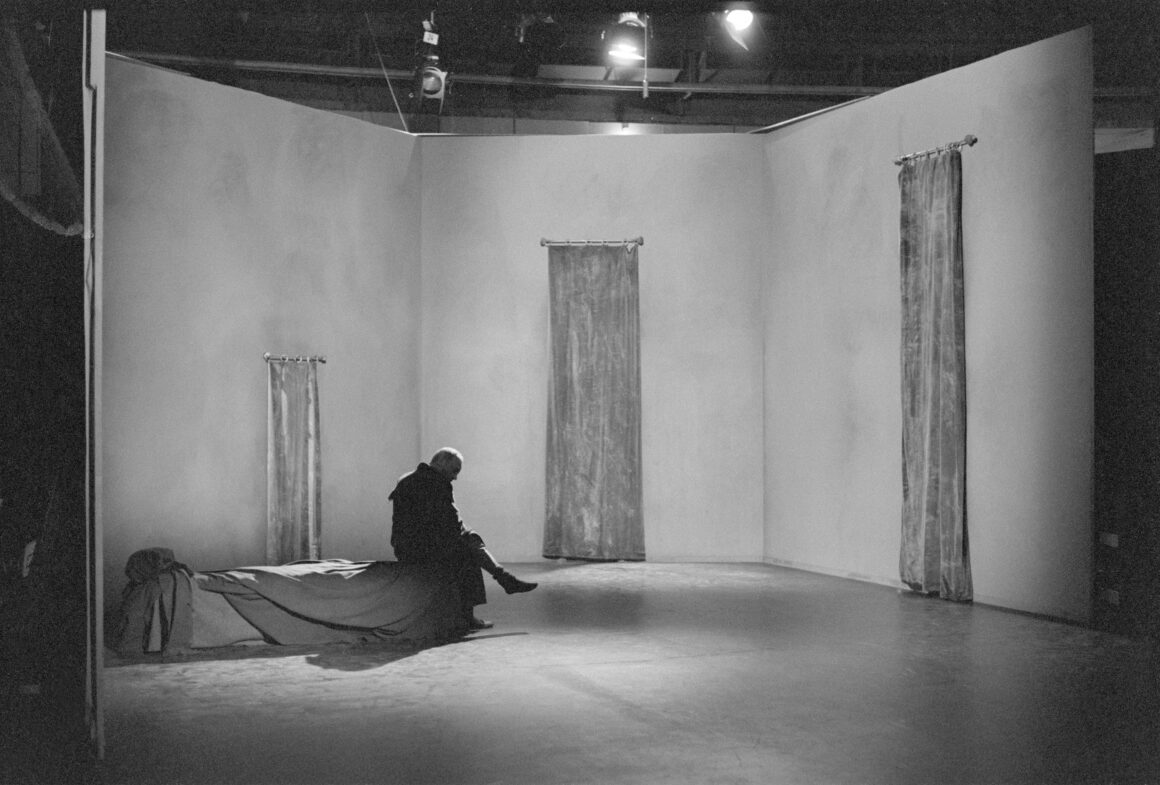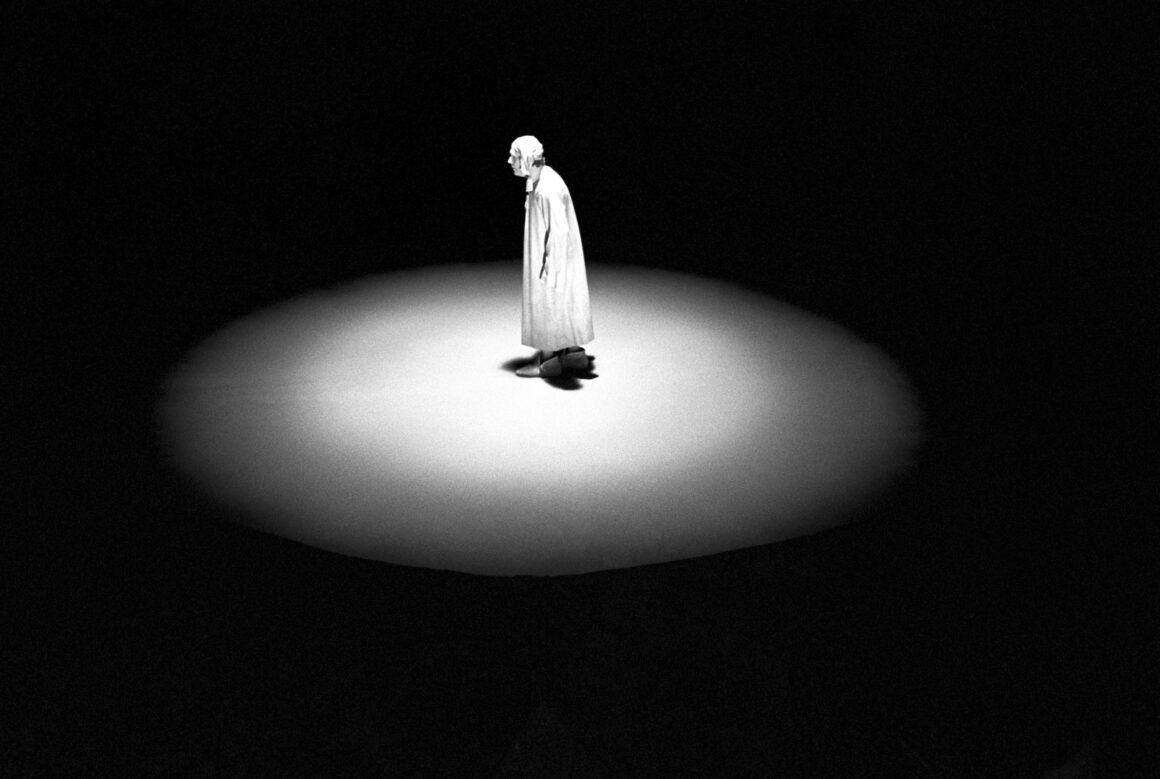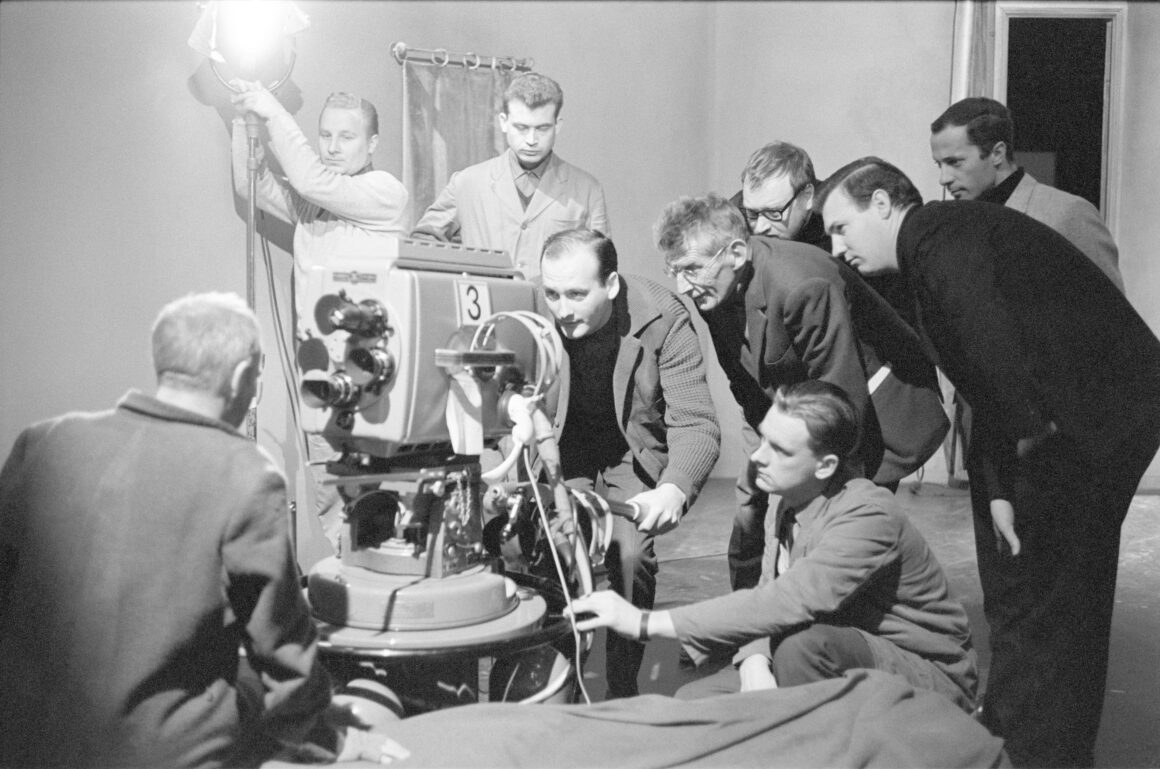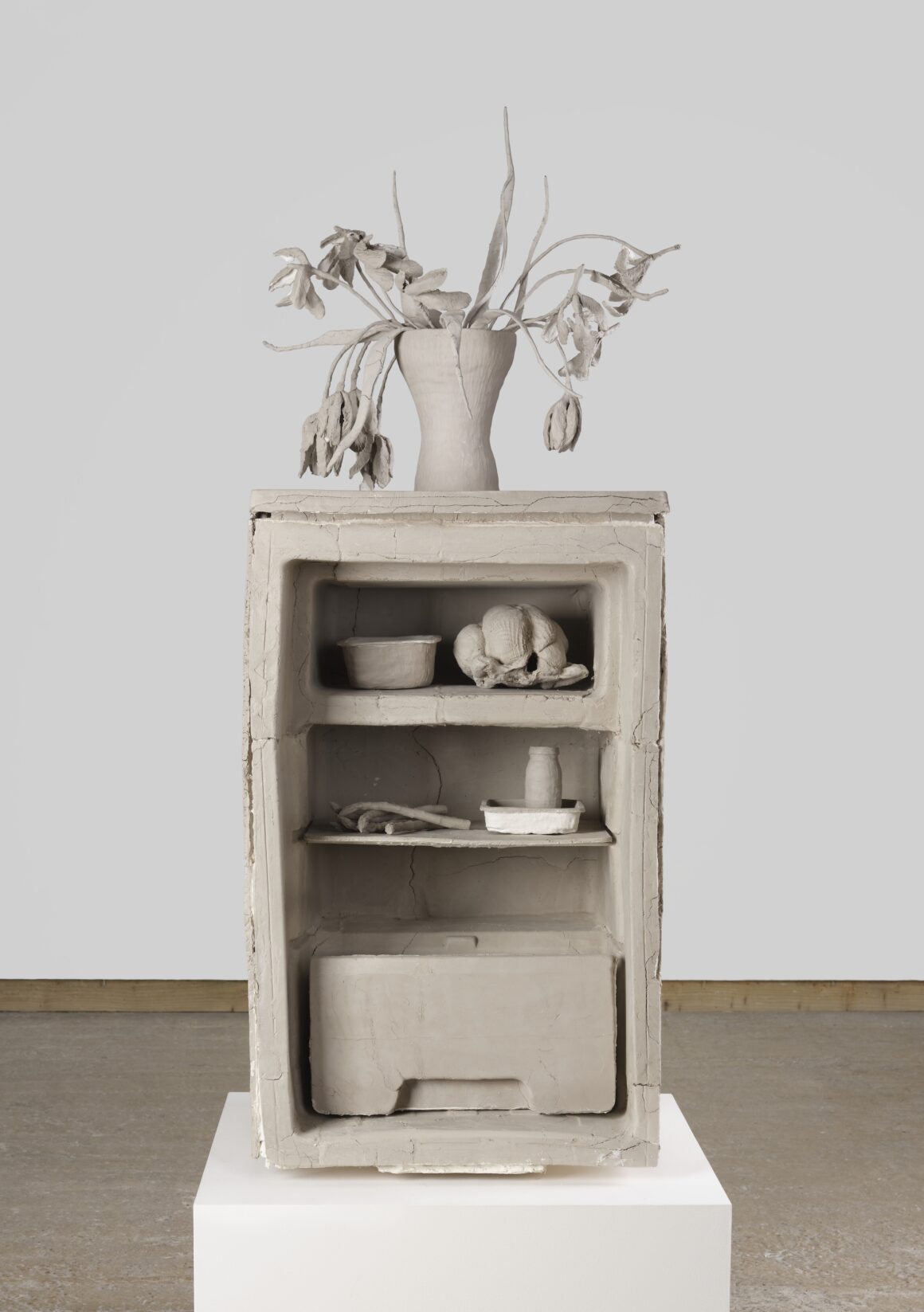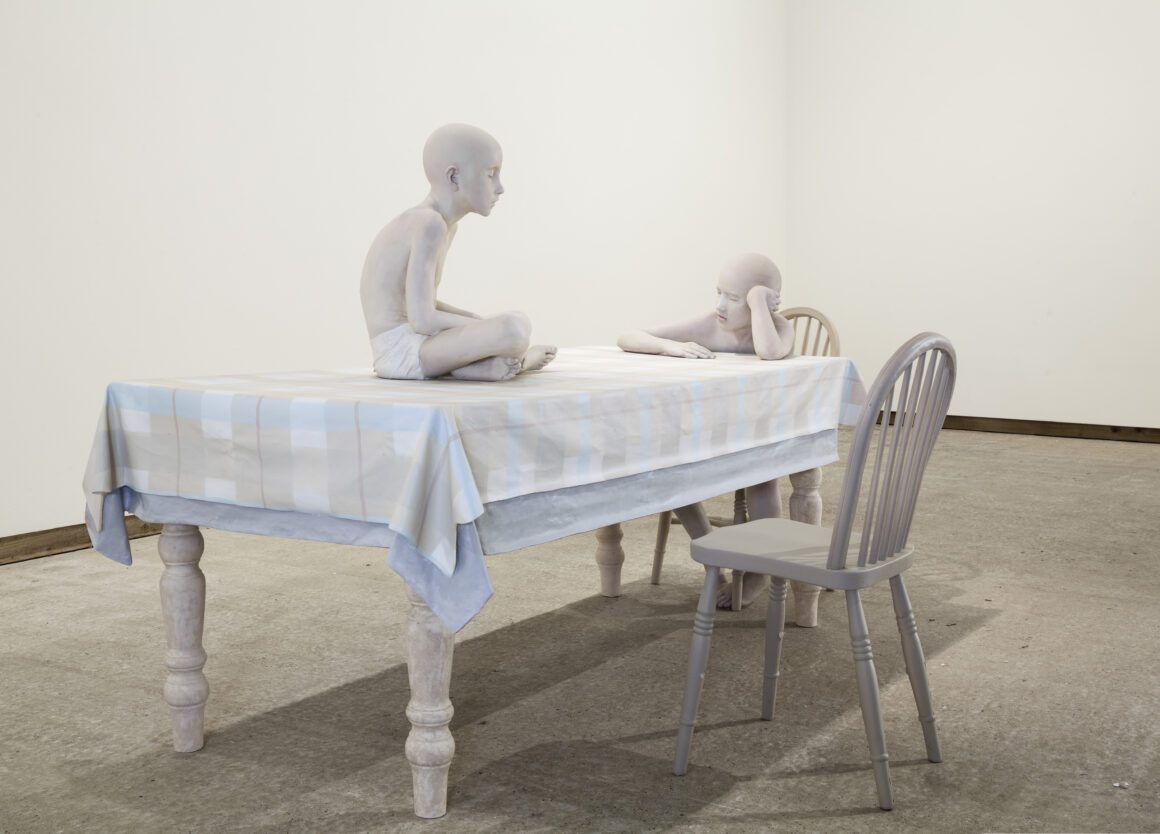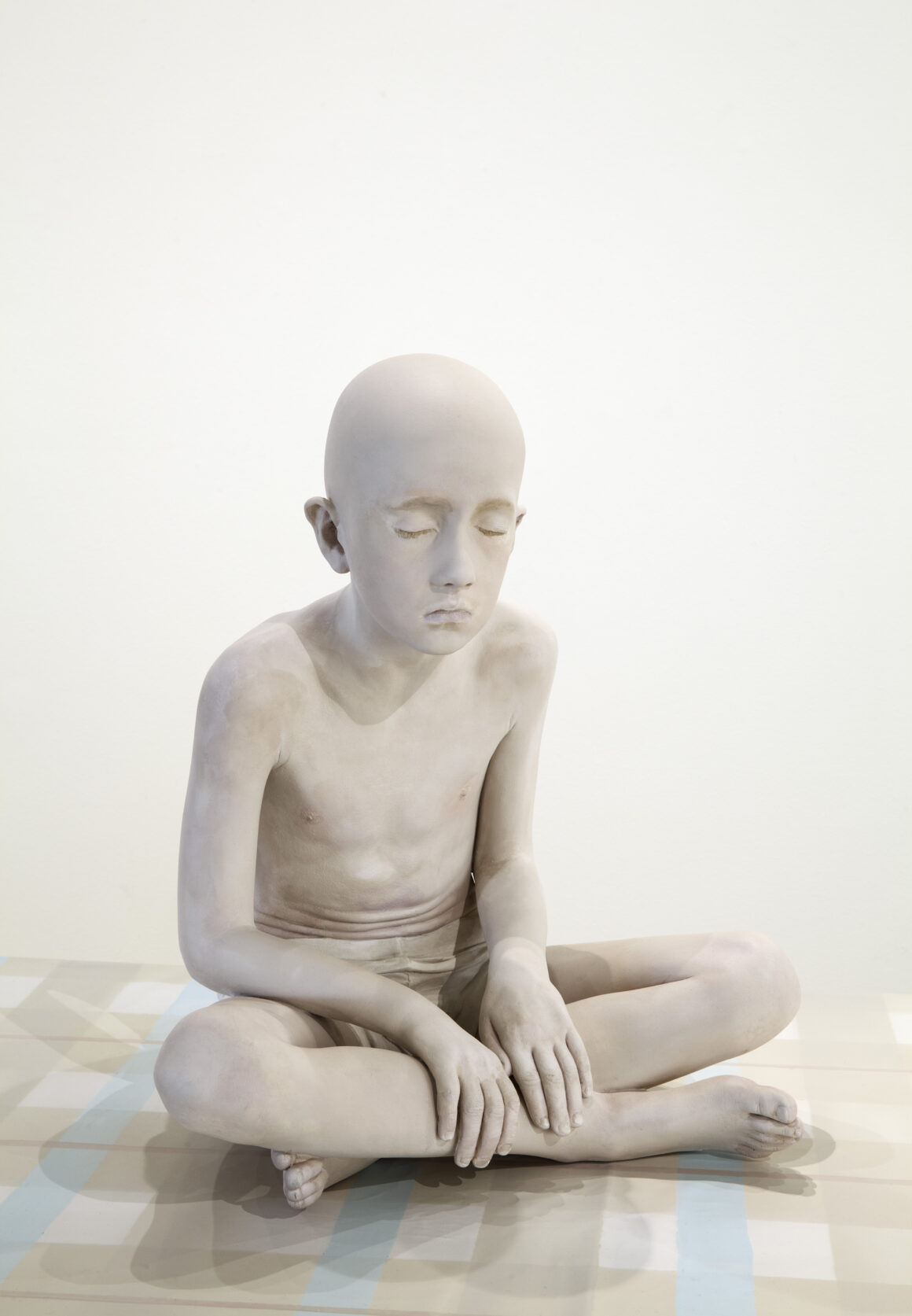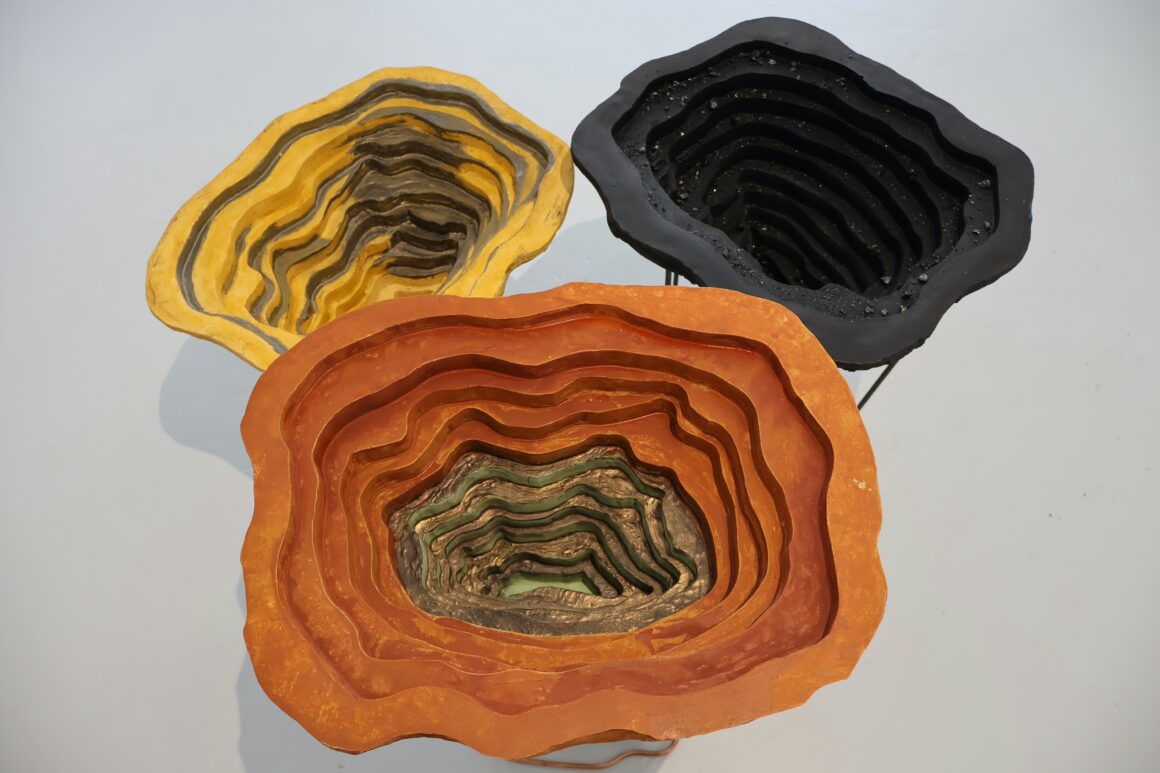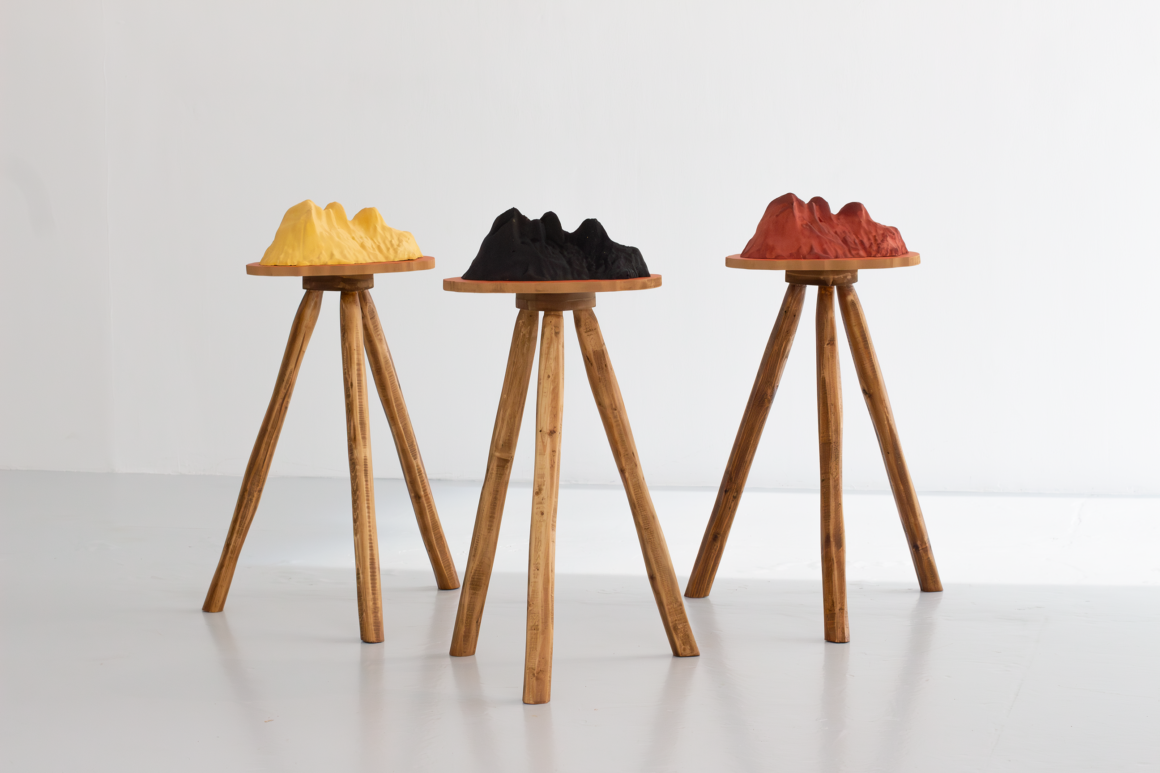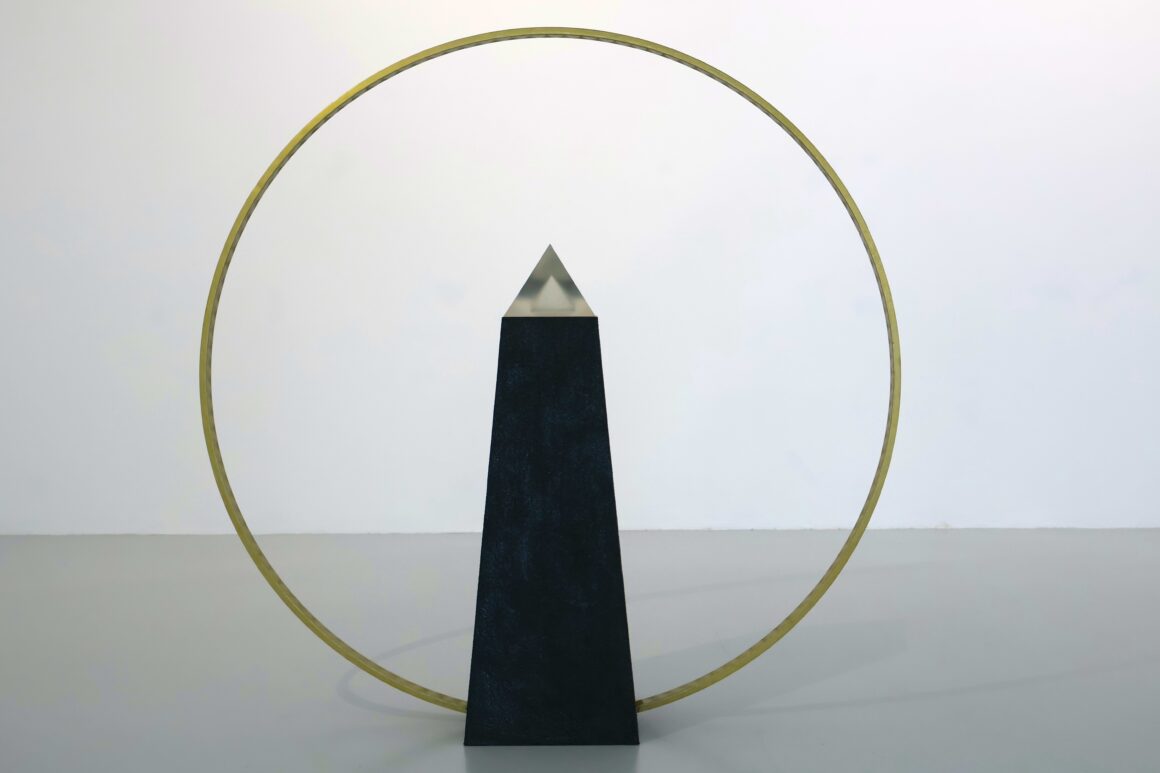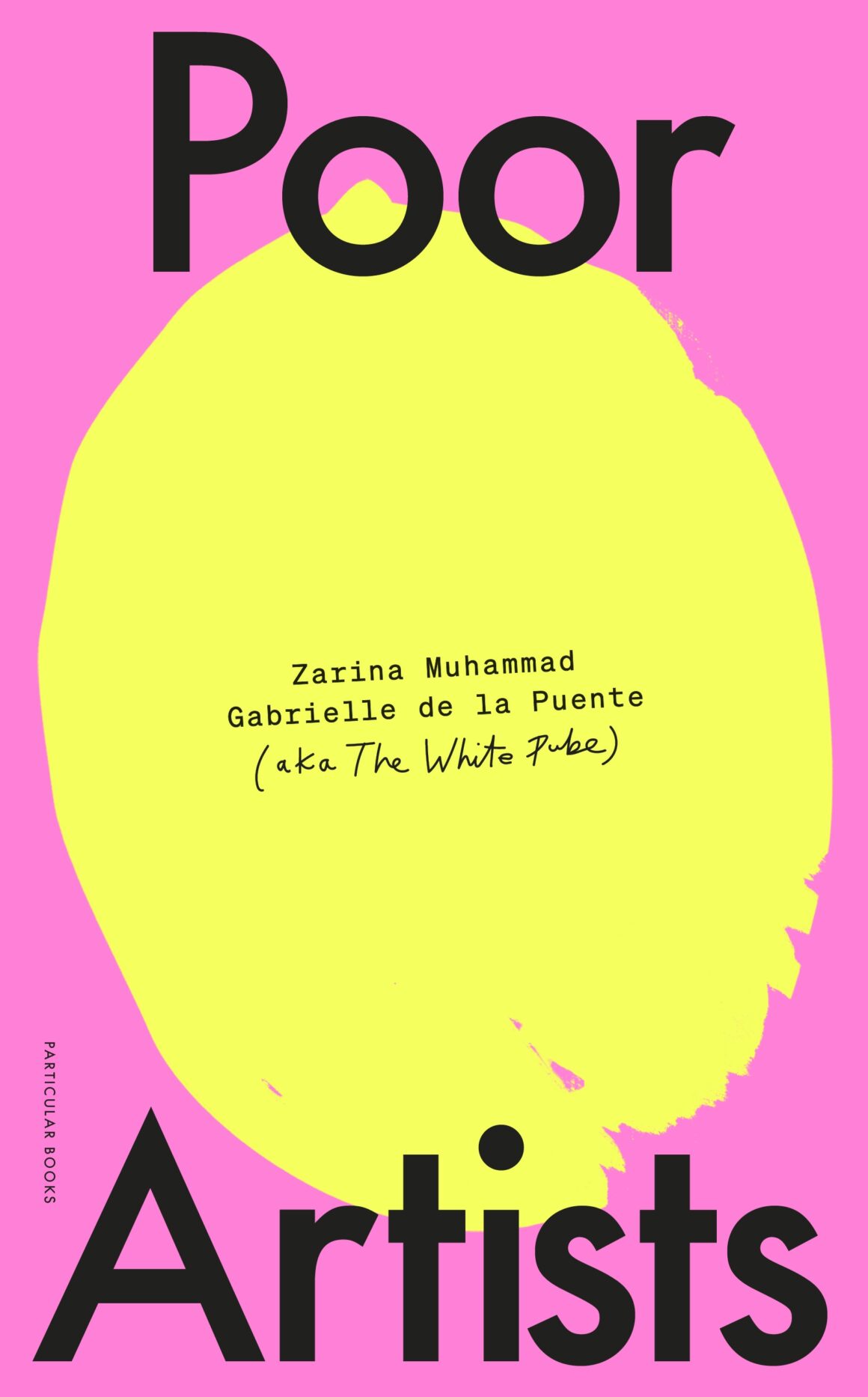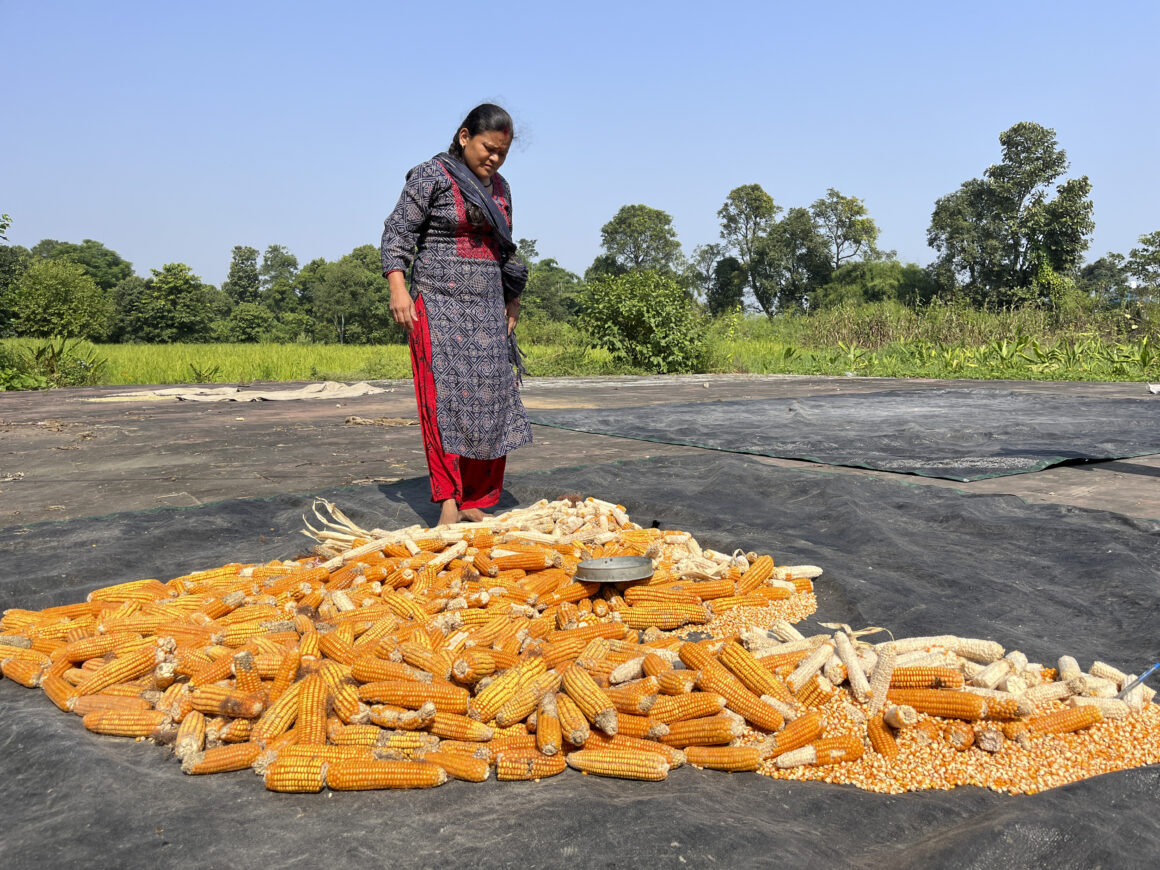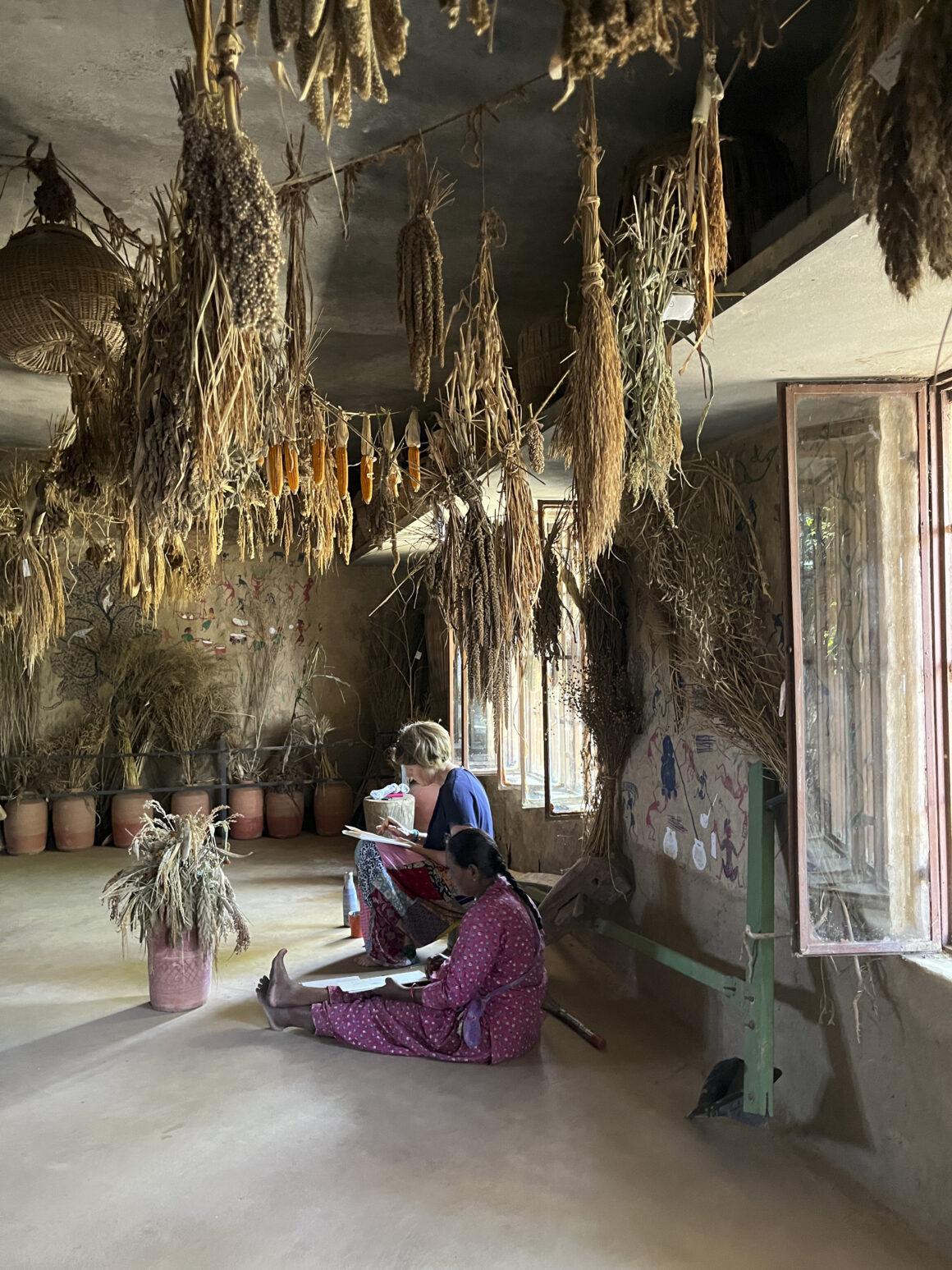-மேகலா இராமமூர்த்தி
மாந்தர்களாகிய நாம் வாழ்ந்துவரும் இந்தப் புவியானது சூரியக் குடும்பத்திலுள்ள (Solar System) எட்டுக் கோள்களுள் ஒன்றாகும். செவ்வாய், புதன், வியாழன், வெள்ளி, சனி, யுரேனஸ், நெப்டியூன் ஆகியவை மற்ற கோள்களாகும். புளூட்டோ எனும் சிறிய கோளும் சூரியக் குடும்ப உறுப்பினராகத்தான் கடந்த காலத்தில் இருந்தது; ஆனால் வானியலாளர்கள் வரையறுத்த கோளுக்கான அளவைவிட அது சிறியதாக இருந்தபடியால் கோள் எனும் தகுதியை இழந்து, 2006ஆம் ஆண்டு ஆகஸ்டு 24 அன்று, சூரியக் குடும்பத்திலிருந்து வெளியேற்றப்பட்டுவிட்டது.
இப்போது ’சூரியக் குடும்பம்’ எனும் சொல்லாட்சி அனைவரும் அறிந்த ஒன்றாக இருப்பினும் உலகம் அதனை அத்தனை எளிதில் கண்டடைந்துவிடவில்லை; அதற்குப் பன்னூறாண்டுகள் ஆயின என்பதுதான் வரலாறு காட்டும் உண்மை.
புவி மையக் கோட்பாடு (Geocentrism):
தொடக்க காலத்தில் பேருலகம் (Universe) புவியை மையமாகக் கொண்டது என்றும், ஏனைய கோள்கள் புவியையே சுற்றிவருகின்றன என்றும்தான் எண்ணியிருந்தனர் மக்கள். இந்தக் கருத்துருவுக்கு புவி மையக் கோட்பாடு என்று பெயர்.
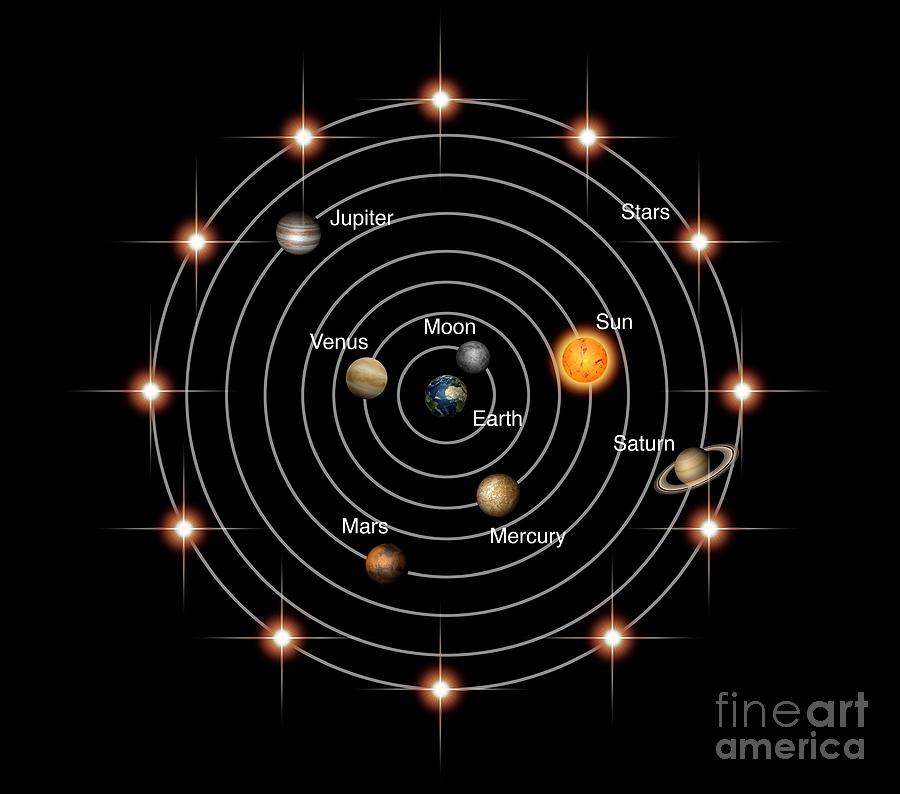
பிளேட்டோ (Plato): கி.மு. 4ஆம் நூற்றாண்டைச் சார்ந்த கிரேக்கத் தத்துவ அறிஞரும் கருத்துமுதல்வாதியுமான பிளேட்டோ விண்மீன்கள், கோள்கள், பருப்பொருள்கள் அனைத்தையும் உள்ளடக்கிய பேருலகிற்கு மையமாக இருப்பது புவியே எனும் கருத்தைக் கொண்டிருந்தார்.
அரிஸ்டாட்டில் (Aristotle): பிளேட்டோவின் புகழ்வாய்ந்த மாணவரும் சிந்தனையாளருமான அரிஸ்டாட்டிலும் புவியானது நிலையாக இந்தப் பேருலகின் மையத்தில் அமைந்திருக்க, ஏனைய கோள்கள் வட்ட வடிவில் அதனைச் சுற்றிவருகின்றன என்று வாதிட்டார்.
கிளாடியஸ் தாலமி (Claudius Ptolemy): அரிஸ்டாட்டிலின் கருத்துக்கு வலுசேர்க்கும் வகையிலும் புவி மையக் கோட்பாட்டை ஆழமாக நிறுவும் வகையிலும் எகிப்தைச் சேர்ந்த வானியல் அறிஞரும் கணிதவியலாளருமான கிளாடியஸ் தாலமி, கி.பி.150இல் தம் வானியல் ஆய்வுகள் குறித்த விவரங்களை ’Almagest’ (Meaning: The Great Compilation – பெருந்தொகுப்பு) எனும் பெயரில் நூலாக வெளியிட்டார். அதில் பேருலகின் மையமாகப் புவியே விளங்குகின்றது என்றும் சூரியன், நிலவு, கோள்கள், உடுக்கள் அனைத்தும் புவியையே சுற்றிவருகின்றன என்றும் அவர் குறிப்பிட்டார்.
பிளேட்டோ, அரிஸ்டாட்டில் ஆகியோரின் தத்துவார்த்த அவதானிப்புகளைப்போல் அல்லாமல் தாம் வடிவமைத்த கணித மாதிரியை (mathematical model) அடிப்படையாகக் கொண்டு தாலமி புவி மையக் கோட்பாட்டை வரையறுத்திருந்தாலும் அவரின் சிந்தனைக்கு அடிப்படையாக அமைந்தது அவ்விருவரின் சிந்தனையோட்டமே. தொலைநோக்கிகள் கண்டுபிடிக்கப்படாத அக்காலத்தில், புழக்கத்திலிருந்த வானியல் கருவிகளான ஆஸ்ட்ரோலேப் Astrolabe, நோமோன் (Gnomon) போன்றவற்றின் உதவியோடும், வெறும் கண்களால் தாம் இரவு வானில் கண்டறிந்த வான்வெளி உண்மைகளை அடிப்படையாகக் கொண்டும் தம் கணித மாதிரியைத் தாலமி உருவாக்கினார். கிட்டத்தட்ட ஆயிரத்து நானூறு ஆண்டுகட்குத் தாலமியின் நூலான ’Almagest’ புவி மையக் கோட்பாட்டுக்கு வலுவான ஆதாரமாய்த் திகழ்ந்தது.
தாலமிக்குப் பிறகும் நீண்டகாலத்துக்குப் புவி மையக் கோட்பாடே நிலைபெற்றிருந்தது; அதற்கு முதன்மையான காரணம் மதங்களின் செல்வாக்கே. விவிலியத்தின் ஆதியாகம நூலானது (Book of Genesis), புவியின் படைப்பு கடவுளால் வேண்டுமென்றே செய்யப்பட்ட செயலென்றும், புவியே அவரது படைப்பின் அசையாத மையப்புள்ளியென்றும் (Psalm 104:5) விவரித்தது. இசுலாமிய சமயத்தின் புனிதநூல் கோட்பாடுகளும் புவியை மையப்படுத்தியதாகவே அமைந்திருந்தன; ஆதலால் இவ்விரு சமயத்தினரும் புவி மையக் கோட்பாட்டை ஆதரித்தனர். எனவே, கி.பி. 15ஆம் நூற்றாண்டுவரை புவி மையக் கோட்பாடே உலகோரால் ஏற்றுக்கொள்ளப்பட்டிருந்தது.
சூரிய மையக் கோட்பாடு (Heliocentrism):
அரிஸ்டார்கஸ் (Aristarchus of Samos): அரிஸ்டாட்டிலுக்குக் காலத்தால் சற்று முற்பட்டவரும் (310–230 BCE) கிரேக்கத் தீவான சாமோஸில் வாழ்ந்தவருமான வானியலாளரும் கணிதவியல் வல்லுநருமான அரிஸ்டார்கஸ், சூரிய மையக் கோட்பாட்டை முன்மொழிந்தவர் என்பது நமக்கு வியப்பளிக்கக்கூடிய செய்தியே. புவி, தன்னுடைய அச்சில் சுழல்கின்றது என்பதையும் இரவும் பகலும் மாறிமாறித் தோன்றுவதற்கு அதுவே காரணம் என்பதையும் கண்டறிந்துரைத்த அறிஞர் அவர். சூரியனானது புவி, நிலவு ஆகியவற்றைவிட அளவில் பெரியதாகத் தோன்றுவதையும், அவையிரண்டையும்விட அதிகத் தொலைவில் இருப்பதையும் கவனித்த அரிஸ்டார்கஸ், சூரியனே சூரிய மண்டலத்தின் மையமாக இருக்கவேண்டும் எனும் தம் கருத்தைத் தெரிவித்தார். எனினும், அரிஸ்டாட்டில், தாலமி ஆகியோரின் கருத்துக்களுக்குப் பொதுமக்களிடமும், மக்களை வழிநடத்திய மதங்களிடமும் இருந்த செல்வாக்கால் அவரின் கருத்து எடுபடாமல் போனது.
நிக்கோலஸ் கோப்பர்னிகஸ் (Nicolaus Copernicus): அரிஸ்டார்கஸின் கருத்து விதை, அவர் காலத்தில் முளைவிடாமல் போனாலும் கி.பி. 15/16ஆம் நூற்றாண்டுகளில் வாழ்ந்த போலந்து நாட்டைச் சார்ந்த கணிதவியலாளரும் வானியலாளருமான நிக்கோலஸ் கோப்பர்னிகஸ் மூலமாக முளைவிட்டு எழுந்தது. அவரும் அரிஸ்டார்கஸைப் போலவே புவி மையக் கோட்பாட்டை மறுத்துச் சூரிய மையக் கோட்பாட்டையே முன்வைத்தார். 1543ஆம் ஆண்டு வெளிவந்த ’De revolutionibus orbium coelestium’ (’On the Revolutions of the Celestial Spheres’ – வான்கோளங்களின் சுழற்சி) எனும் தம் நூலில், சூரியனே இப்பேருலகின் மையம்; புவி அன்று எனவும், புவியும் பிற கோள்களும் சூரியனைச் சுற்றிவருகின்றன’ எனவும் அவர் குறிப்பிட்டிருந்தார். இந்தக் கருத்தை அவர் கணிதவியல் அடிப்படையில் விளக்கிக் கோள்களின் இயக்கங்களுக்குக் குறிப்பாக அவற்றின் பின்னோக்கிய இயக்கங்களுக்கு (retrograde motion) எளிய விளக்கங்களைத் தந்திருந்தார்.
சூரிய மையக் கோட்பாட்டைக் கோர்ப்பனிகஸ் கண்டறிந்தது எப்படி?
தாலமியின் புவி மையக் கோட்பாட்டு வரைபடத்தைக் கண்ட கோப்பர்னிகஸ், அதில் கோள்களின் முன்னோக்கிய பின்னோக்கிய சுழற்சிகளை விவரிக்கச் வட்டத்துக்குள் வட்டமிடும் சிக்கலான முறைகள் கையாளப்பட்டிருந்ததைக் கவனித்தார். செவ்வாய், வியாழன், சனி போன்ற கோள்கள் சில நேரங்களில் பின்னோக்கி நகர்வதை விளக்குவதில் தாலமியின் புவி மைய வரைபட மாதிரி இத்தகு சிக்கலை எதிர்கொள்வதைக் கோப்பர்னிகஸ் உணர்ந்தார்.
கோள்களின் இயக்கம் அவற்றின் வேகம் குறித்த விவரங்களைத் தாலமி, அவருக்கு முற்பட்ட வானியலாளரான ஹிப்பார்கஸ் (Hipparchus) ஆகியோரின் வரைபடங்கள், மாதிரிகள், கணிதவியல் கருத்துக்கள் ஆகியவற்றின் வாயிலாக அறிந்த கோப்பர்னிகஸ், கோள்களின் இயக்கம் குறித்துத் தாம் கண்டறிந்த விவரங்களோடு அவற்றை ஒப்பிட்டுப்பார்த்து, புவியைப்போல் சூரியனுக்கு அருகிலுள்ள கோள்கள், தொலைவிலுள்ள கோள்களைக் காட்டிலும் வேகமாகச் சுழல்வதையும், புவி மெதுவாக இயங்கும் வேறொரு கோளை முந்திச்செல்லும்போது அந்தக் கோள் பின்னோக்கிச் செல்வதுபோன்ற மாயத்தோற்றம் ஏற்படுவதனையும் புரிந்துகொண்டார். [சான்றாக நாம் மகிழுந்தில் வேகமாகச் செல்வதாக வைத்துக்கொள்வோம்; நாம் செல்லும் திசையிலேயே நம்மைவிடக் குறைந்த வேகத்தில் செல்லும் மற்றொரு மகிழுந்தை நாம் கடக்கும்போது முன்னோக்கிச் சென்றுகொண்டிருக்கும் அம்மகிழுந்து பின்னோக்கி நகர்வதுபோல் நமக்குத் தோற்றமளிக்கும்; இதே நிகழ்வுதான் கோள்களின் வேறுபட்ட வேகச் சுழற்சியின்போதும் நிகழ்கின்றது.]
எனவே, புவி உட்பட அனைத்துக் கோள்களும் சூரியனைச்சுற்றி இயங்குவதாகக் கொண்டால், கோள்களின் இயக்கத்தை இயல்பாக – எவ்விதச் சிக்கலுமின்றி விளக்கமுடியும் என்றார் கோப்பர்னிகஸ்.

வானியல் ஆய்வில் தாம் கண்டுணர்ந்த சூரிய மையக் கோட்பாட்டை வெளிப்படுத்தி நூலெழுதியவரான கோப்பர்னிகஸ், திருச்சபை மதகுருமாராக (Clergy) இருந்தவர் என்பது குறிப்பிடத்தக்கது. அவரது போலந்து நாட்டுத் திருச்சபையும் கத்தோலிக்கக் கிறித்தவத்தைச் சார்ந்ததுதான்; அதனால், தாம் கண்டறிந்து ஆவணப்படுத்திய உண்மைகளை அவர் தீவிரமாகப் பரப்புரை செய்யவில்லை; அத்தோடு கத்தோலிக்கத் திருச்சபை, இறைவனின் படைப்புக் கோட்பாட்டுக்கு எதிரான சூரிய மையக் கோட்பாட்டையும் அதனை முன்மொழிந்தவர்களையும் முழுவீச்சில் ஆராய்ந்து தண்டிப்பதற்கு முன்பாகவே அவர் இயற்கை எய்திவிட்டார்.
ஜார்ஜ் ஜோச்சிம் ரெட்டிகஸ் (Georg Joachim Rheticus): கோப்பர்னிகஸின் மாணவரான ரெட்டிகஸ் சூரிய மைய மாதிரியை ஆதரித்தவராவார். கோப்பர்னிகஸ் தம்முடைய ‘De revolutionibus orbium coelestium’ நூலை வெளியிடுவதற்குப் பேரூக்கம் தந்தவர் இவர்.
ஜியோர்டானோ புருனோ (Giordano Bruno): வானியலில் மிகுந்த ஆர்வம்கொண்ட மெய்யிலாளரான புருனோ, சூரியனை மையமாகக் கொண்டே புவியும் பிற கோள்களும் இயங்குகின்றன எனும் கோப்பர்னிகஸின் கோட்பாட்டை வழிமொழிந்தார். சூரியன் என்பது உடுக்களுள் ஒன்று, எண்ணிறந்த உடுக்களையும் கோள்களையும் கொண்ட இந்தப் பேருலகம் எல்லையற்றது என்பவை இவரின் கண்டுபிடிப்புகளாகும்.
புருனோ கிறித்த மதத்தைச் சார்ந்தவராக இருந்தபோதிலும் ஏசுநாதரின் தெய்வீகத்தன்மை, திருப்பலியின்போது உரொட்டியும் மதுவும் முறையே ஏசுநாதரின் உடலாகவும் குருதியாகவும் மாறும் என்பன போன்ற கருதுகோள்களையும், நரகம் குறித்த கிறித்தவ மத நம்பிக்கையையும் அறிவுக்குப் பொருந்தாதவை என ஏற்க மறுத்து அவற்றை வினாக்களுக்கு உட்படுத்தினார்.
சூரிய மையக் கோட்பாட்டை ஆதரித்ததற்காகவும் கிறித்தவ மத நம்பிக்கைகளுக்கு எதிரான கருத்துக்களைத் தெரிவித்ததற்காகவும் சிறையிலடைக்கப்பட்டுத் தம் கருத்துக்களைத் திரும்பப் பெறுமாறு கத்தோலிக்கத் திருச்சபையால் சித்திரவதை செய்யப்பட்டார் புருனோ; அப்படியும் அவர் தம்முடைய கருத்துக்களைத் திரும்பப்பெற மறுத்ததால் திருச்சபையின் உத்தரவின்பேரில் பிப்ரவரி 17, 1600இல் கழுமரத்தில் கட்டப்பட்டு உயிரோடு எரித்துக்கொல்லப்பட்டார்.
”அன்பே வடிவான ஏசுகிறிஸ்துவின் போதனைகளைப் பின்பற்றுபவர்கள் நாங்கள்” என்று மார்தட்டிக்கொண்ட கத்தோலிக்கத் திருச்சபையின் செயற்பாடு, அவர்களின் பரப்புரைக்கும் நடைமுறைக்கும் உள்ள இடைவெளி மலைக்கும் மடுவுக்குமானது என்பதைத் தெளிவாய்ப் பறைசாற்றுகின்றதல்லவா?
ஜோஹன்னஸ் கெப்ளர் (Johannes Kepler): ஜெர்மானிய வானியலாளரான இவர், கோப்பர்னிகஸின் சூரிய மையக் கோட்பாட்டை ஆதரித்ததோடு, அக்கோட்பாட்டை விரிவுபடுத்திக் கெப்ளரின் கோளியக்க விதிகளை (Kepler’s Laws of Planetary Motion) உருவாக்கிய சிறப்புக்குரியவராவார். கோள்கள் வட்டவடிவச் சுற்றுப்பாதையில் சூரியனைச் சுற்றிவருகின்றன எனும் கோப்பர்னிக்கஸின் கருத்தை மறுத்து, அவை நீள்வட்டப் பாதையில் சூரியனைச் சுற்றிவருகின்றன எனும் உண்மையைத் தம் கணிதவியல் கணக்கீடுகளின் அடிப்படையில் முதன்முதலில் வெளியிட்டவர் இவரே.
துல்லியமான கணிதத்தை அடிப்படையாகக் கொண்ட கெப்ளரின் ஆய்வுப் பணியானது ஊக அடிப்படையிலான முந்தைய மாதிரிகளிலிருந்து வேறுபட்டிருந்தது.
கெப்ளர் ஜெர்மானியராக இருந்ததாலும், கத்தோலிக்கப் பிரிவைச் சாராது லூத்தரனாக (Lutheran – a major branch of Protestant Christianity) இருந்ததாலும் கத்தோலிக்கத் திருச்சபையினரின் அடக்குமுறைகளிலிருந்தும் கொலைத் தண்டனையிலிருந்தும் தப்பித்தார்; இல்லையேல் அவரையும் கழுவேற்றியிருப்பர் திருச்சபையினர்.
கலிலியோ கலிலி (Galileo Galilei): இத்தாலிய வானியலாளரும் இயற்பியலாளருமான கலிலியோ, தாம் செம்மைப்படுத்திய தொலைநோக்கியின் உதவியோடு வானியல் ஆய்வுகள் மேற்கொண்டு சூரிய மையக் கோட்பாட்டை உறுதிப்படுத்தினார். வியாழனின் நிலவுகளை அவர் கண்டறிந்தார் (இவற்றைக் கலிலியோவின் நிலவுகள் என்றழைத்தார் அவர்); இக்கண்டுபிடிப்பானது வானிலுள்ள கோள்கள் புவியைச் சுற்றிவரவில்லை என்பதற்கான சான்றாக அமைந்தது. அவ்வாறே வெள்ளிக்கோளில், நிலவையொத்த, வளர்நிலை தேய்நிலைகள் இருப்பதனை அவதானித்த அவர், வெள்ளி, சூரியனைச் சுற்றிவந்தால் மட்டுமே இவை சாத்தியம் என்பதனை உணர்ந்தார். பால்வீதியை ஆய்வுசெய்த அவர், அது நெபுலாவால் (nebula – a cloud of gas and dust) ஆனது எனும் முந்தைய கருதுகோள் உண்மையன்று; மாறாக எண்ணற்ற உடுக்களால் ஆனது என்பதனையும் கண்டுபிடித்தார்.
தம் வானியல் கண்டுபிடிப்புகளை வெளிப்படுத்தி அவரெழுதிய நூலான ’Sidereus Nuncius’ (’நட்சத்திரத் தூதர்’) 1610இல் வெளியீடு கண்டது. இந்நூல், வானியல்துறையில் ஒரு புரட்சிகரமான படைப்பு எனில் மிகையில்லை.
திருச்சபையினர் தம் மதவாதச் சிந்தனையை மாற்றிக்கொள்ளாமல் தொடர்ந்து சூரிய மையக் கோட்பாட்டுக்கு எதிரானவர்களாகவே இருப்பதனை அறிந்த கலிலியோ தம்முடைய ’Dialogue Concerning the Two Chief World Systems’ எனும் நூலில் அறிவியலை ஏற்க மறுக்கும் அறிவிலிகள் என்று திருச்சபையினரை மறைமுகமாகச் சித்திரித்தார்.
கலிலியோவின் செயற்பாடுகளால் எரிச்சலடைந்த திருச்சபை, அவர் தம்முடைய கருத்துக்களைத் திரும்பப்பெற வேண்டும் எனும் நெருக்கடியைத் தொடர்ந்து அளித்துவந்தது. அவர் அதனை ஏற்கமறுக்கவே, அவருடைய நூல்களைத் தடைசெய்து 9 ஆண்டுகள் அவரை வீட்டுக்காவலில் வைத்தது. அப்போதும் அவர் தம் அறிவியல் ஆராய்ச்சிகளைத் தொடர்ந்து மேற்கொண்டும், நூல்களை எழுதிக்கொண்டுமே இருந்தார். அக்காலக்கட்டத்தில் அவரெழுதிய நூல்தான், ’Two New Sciences.’ நவீன இயற்பியலுக்கு (modern physics) அடித்தளம் அமைத்துத்தந்த நூலாக அது கருதப்படுகின்றது; அதன் காரணமாக கலிலியோ, ’நவீன அறிவியலின் தந்தை’ (Father of Modern Science) என்றழைக்கப்படுகின்றார்.
தொடர்ந்து வானியல் ஆய்வுகள் மேற்கொள்ள இயலாதபடி கண்புரை நோய் (Cataracts) கலிலியோவைப் பாதித்து அவரின் பார்வையைப் பறித்தது. எனினும், தம் உதவியாளர்களை வைத்து அவர் தம் எழுத்துப் பணிகளை மேற்கொண்டதாகத் தெரிகின்றது. வீட்டுக் காவலில் இருந்த சூழலிலேயே தம்முடைய 77ஆவது அகவையில் அவர் மரணமடைந்தார்.
சர் ஐசக் நியூட்டன் (Sir Isaac Newton): கெப்ளர், கலிலியோ ஆகியோருக்குப்பின் வந்த அறிவியலாளர்களுள் குறிப்பிடத்தக்கவர் நியூட்டன். இயற்பியல், கணிதம், வானியல்சார் ஆய்வுகளை அவர் மேற்கொண்டார். இயற்பியலாளராக இயக்க விதிகளையும், ஈர்ப்பு விதியையும் (the laws of motion and gravity) உருவாக்கினார். கணிதவியலாளராக கால்குலஸ் (calculus) எனும் கணிதப் பிரிவை அறிமுகப்படுத்தினார். வானியலாளராக தமக்கு முன்பு புழக்கத்திலிருந்த, கலிலியோ பயன்படுத்திய தொலைநோக்கியைப் புதுப்பித்தார். அந்தத் தொலைநோக்கியின் உதவியோடு அவர் மேற்கொண்ட ஆய்வுகள் சூரிய மையக் கோட்பாட்டுக்கு வலுசேர்ப்பனவாக அமைந்தன.
17ஆம் நூற்றாண்டின் இறுதியில் கெப்ளரின் கோளியக்க விதிகளும், நியூட்டனின் ஈர்ப்பு விதிகளும் சூரிய மையக் கோட்பாட்டின் உண்மைத்தன்மையை ஐயத்திற்கிடமின்றி நிறுவியபிறகு அக்கோட்பாடு அறிவியலாளர்களால் பரவலாக ஏற்றுக்கொள்ளப்பட்டது.
கத்தோலிக்கத் திருச்சபை 1822ஆம் ஆண்டு கலிலியோவின் புத்தகங்களுக்கு விதித்திருந்த தடையை நீக்கி அவற்றை வெளியிட அனுமதித்தது. எனினும் கலிலியோவை நடத்திய விதத்தில் தன் தவற்றை உணர்ந்து அது மன்னிப்புக் கேட்டதென்னவோ அவர் இறந்து 350 ஆண்டுகளுக்குப் பிறகுதான். ஆம், கலிலியோ இறந்தது 1642இல்; கத்தோலிக்கத் திருச்சபையின் தலைவரான போப் இரண்டாம் ஜான் பால் (Pope John Paul II) கலிலியோ விசயத்தில் திருச்சபை தவறிழைத்துவிட்டது என்று தம் உரையினிடையே குறிப்பிட்டது 1992இல்.
இன்று சூரிய மையக் கோட்பாடும், அதன் நீட்சியான சூரியக் குடும்பமும் (Solar System) அனைவரும் அறிந்த ஒன்றாகிவிட்டது.
மதவாதச் சிந்தனைகள் அறிவியல் வளர்ச்சிக்குப் பெருந்தடையாக இருந்ததோடல்லாமல் அறிவியலாளர்களின் உயிருக்கே ஊறு விளைவித்தன என்பதனைக் கடந்தகால வரலாறுகள் தெளிவாய் நமக்கு அறியத்தருகின்றன. அறிவியலில் மத நம்பிக்கைகளைக் கலவாமலிருப்பதே அறிவியல்துறையின் வளர்ச்சிக்கும், மாந்தகுலத்தின் அறிவு வளர்ச்சிக்கும் துணைசெய்யும் என்பதே காலம் நமக்குணர்த்தும் பாடம்.
*****
கட்டுரைக்குத் துணைசெய்தவை:
- https://en.wikipedia.org/wiki/Geocentric_model#:~:text=In%20the%204th%20century,Eudoxus%27%20system.&text=and%20planets%20were%20carried,Eudoxus%27%20system.&text=celestial%20sphere.%20In%20his,Eudoxus%27%20system.&text=worked%20with%20Plato%2C%20developed,Eudoxus%27%20system.
- https://futurism.com/from-geocentrism-to-heliocentrism
- https://en.wikipedia.org/wiki/Aristarchus_of_Samos#:~:text=Like%20Anaxagoras%20before%20him%2C,heliocentric%20theory.%5B7%5D%5B8%5D&text=the%20Sun%2C%20albeit%20farther,heliocentric%20theory.%5B7%5D%5B8%5D&text=of%20the%20geocentric%20theories,heliocentric%20theory.%5B7%5D%5B8%5D&text=%27moving%20Earth%27%20theory%2C%20although,heliocentric%20theory.%5B7%5D%5B8%5D
- https://en.wikipedia.org/wiki/Copernican_heliocentrism#:~:text=Copernican%20heliocentrism%20is%20the,of%20the&text=model%20developed%20by%20Nicolaus,of%20the&text=published%20in%201543.%20This,of%20the&text=positioned%20the%20Sun%20at,of%20the
- https://earthobservatory.nasa.gov/features/OrbitsHistory#:~:text=Galileo%20discovered%20evidence%20to,Beginning%20on&text=support%20Copernicus%27%20heliocentric%20theory,Beginning%20on&text=when%20he%20observed%20four,Beginning%20on&text=moons%20in%20orbit%20around,Beginning%20on
- https://newsroom.ucla.edu/releases/the-truth-about-galileo-and-his-conflict-with-the-catholic-church#:~:text=Sixteen%20years%20after%20his,Roman%20Inquisition.&text=published%20his%20%E2%80%9CDialogue%20on,Roman%20Inquisition.&text=and%20the%20pope%2C%20Urban,Roman%20Inquisition.&text=This%20time%20he%20was,Roman%20Inquisition.
- https://en.wikipedia.org/wiki/Isaac_Newton#:~:text=In%20the%20Principia%2C%20Newton,by%20experiment.%5B18%5D&text=gravity%20to%20derive%20Kepler%27s,by%20experiment.%5B18%5D&text=introduced%20the%20three%2Dbody%20problem.%5B17%5D,by%20experiment.%5B18%5D&text=confirmed%20by%20the%20geodetic,by%20experiment.%5B18%5D
